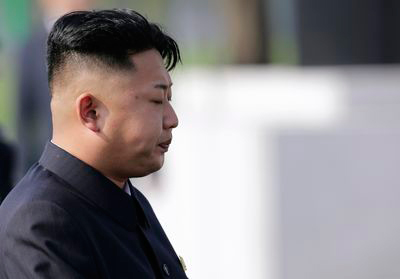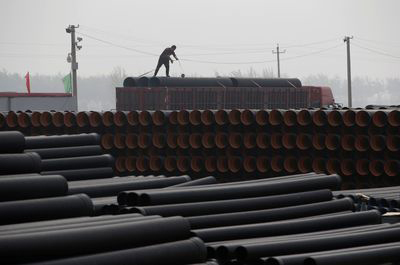At the Mar-A-Lago summit, US President Donald Trump and Chinese President Xi Jinping have agreed on a 100-day negotiation plan in pursuit of a trade deal.
The impact of the meeting with Xi could be best known from Trump's words “very, very great relationship” and subsequent back off from anti-Beijing rhetoric. On campaign trail, candidate Trump had threatened to label China as a currency manipulator and impose hefty border tariffs on Chinese goods. President Trump, who vociferously spoke against Chinese financial aggression until recently, took a U-turn in terms of trade and currency.
While China has been boldly pressing ahead with its globalisation agenda and forged new ties to engage with more nations, a protectionist US, under president Trump, has backed out of its international deals. Thanks to Mar-A-Lago summit, the standoff between the two largest economies has given way to dialogue. Washington has gone back to ‘One China’ policy. And China is reciprocating the negotiating mood in Washington for reconciling with its largest trade partner.
Jared Kushner, a senior White House adviser to father-in-law Trump, is making every effort to smooth over US-China relations. Trump is pushing to extract maximum economic win from China—it is the largest source of the US trade deficit amounting to $347 billion.
 The US wants China to control 'unstable and paranoid' Kim. Pic: Reuters
The US wants China to control 'unstable and paranoid' Kim. Pic: Reuters
China has started honestly looking into means of improving business environment for the US investors at home. Trump had asked Xi to remove trade barriers to help American companies. The Financial Times reported that China agreed to two relatively easy concessions—raising US investment ceilings in financial sectors and ending a 13-year-old ban on US beef import.
Trump wants China to use its leverage over its belligerent neighbour North Korea from threatening peace in East Asia. The US said it was working with China in checking Kim Jong-un's nuclear misadventures. The trade deal would be better off for the Chinese, Trump tweeted, “if they solve the North Korean problem!" The US warned that it would handle the Korean issue even if China did not cooperate. Beijing has promptly cautioned Pyongyang against going ahead with further nuclear tests.
Hawkish America
After its domestic market tumbled, China started dumping its goods abroad. The US says it has options to take China to WTO. In order to reduce enormous trade surplus of China, the Trump administration is targeting Chinese companies on charges of dumping steel, aluminium, household products. But in turn China blames Trump’s protectionist policies and has suggested some areas where they can help reduce its trade surplus.
China could hit back selectively in response to punitive tariffs on goods imported from China. Its hit list could include airplanes, automobiles, iphones, soybean and maize. However, it thinks a full-blown trade war with the US is not in its interests. It is evident that both nations do not want the risk of intensifying a trade war. Why is China averting a confrontation with the US when it has threatened to impose a blanket 45 per cent tariff on Chinese goods?
Crucial partnership
China is the world's largest exporter of goods having large surplus with many of its trading partners. It exports much more in value to the US—China’s top export destination—than it imports from that country. Understandably, in the event of a border tariff war, it will be a bigger loser than the US.
 China started dumping goods abraod after its domestic market slumped. A Chinese worker packs pipelines onto a truck. Photo: Reuters
China started dumping goods abraod after its domestic market slumped. A Chinese worker packs pipelines onto a truck. Photo: Reuters
Trump’s 'America First' focuses on jobs for Americans and on reducing imports. Chinese exports will be biggest casualty of this protectionist policy. If at all required, the US can easily replace China with other nations that provide the same goods with more or less the same price. But it is difficult for China to find a replacement market for its biggest trading partner now, the reason why it aggressively hounds Asian market. Finding a replacement for high-tech products and spares would be an even bigger task for China.
A US–China trade war would bump into Japan, Taiwan and South Korea, which are collateral trade partners of the US. A good share of the assembled products in China are made using components imported from these countries. About 35 per cent of Chinese export is in terms of processing trade.
A slumping US economic growth would hit hard Chinese jobs and exports as the US contributes about 4 per cent to China's GDP as opposed to China’s less than 1 per cent to the US.
On the other hand, American households enjoy benefits of lowest consumer price. On average, buying low priced Chinese goods saves around $900 a year for an American family.
America's debt
The sham custom of fixing the value of Yuan at deceptively low rates incited Trump to call China a currency manipulator. Holding US Treasury bonds worth more than $1 trillion has helped China control the exchange value of yuan. A weak yuan against dollar has a competitive edge for Chinese goods in the US market. Dollar earned from US export market is used for sourcing the US treasury bonds.
Last year, China offloaded some T-bonds to hike the yuan after it fell to an 8-year-low. China can wreck the American economy if it wholly dumps the Treasury bonds, but in the process, it might damage its own economy. Furthermore, slowing US economy will affect China's exports. However, China can sell off its dollar assets when it finds suitable alternate markets or if it could improve its domestic market to that extent. Till then, it has to share the burden of keeping the US market growing. So the chances of China geting rid off its US Treasury bonds are remote.
Power shift
Security issues have taken prominence in the recent times, even though trade and human rights continue to be the major sources of discord on bilateral relations. Asia-Pacific nations have been cozying up to China after Trump officially signed off the Obama’s Trans-Pacific Partnership (TPP). China-led Regional Comprehensive Economic Partnership (RCEP) promises to build economic integration of the region. The US is not comfortable with the fact that regional power balance has slightly shifted to China’s advantage.
America’s allies—especially, Japan, South Korea Australia and South Korea—are concerned about trading off American security priorities in the region. Obama's 'pivot to Asia' policy has collapsed with Trump withdrawing from the 11-member TPP. The recent policy changes including ‘America First’ have made them insecure over America’s future role in the region.
The South China Sea is yet another hot spot. A collapse of Sino-US trade relations could further deteriorate situation in the South China Sea and Taiwan. In this scenario, a confrontation on the trade front between the US and China could risk the stability of the Asia-Pacific.
Baffled by growth
China's economy grew comfortably at 6.9 per cent in the first quarter of 2017, after 2016 turnd out to be the slowest growth in 26 years. However, mounting debt crisis (China's total debt amounts to more than 250 per cent of its GDP) and risky financial markets have put it on shaky grounds. Bad debts of Chinese banks have risen to $3 trillion. Investors are scared of getting involved in legal tangles related to manufacturing sector.
At a time when China is leading a transformation from a state-funded infrastructure-focused economy into a modern market-based one, Beijing doesn’t want to be burdend with a waning job market for its 138 crore people.
Future role
Trump’s immediate concerns are China’s huge trade surplus and its ally North Korea. The US wants China to buy more from America and also control 'unstable and paranoid' Kim. China's strategy is not to precipitate a crisis and avert a trade war with the US and slowly enhance its security role in Asia. It may offer some economic concessions to placate a hawkish US and work to reduce US security role in Asia. If that becomes successful, China thinks, America’s Asia Pacific allies will start drifting towards it.
 The USS Carl Vinson is steaming to waters off the Korean Peninsula. Kim Jong Un may stage yet another weapons test around the anniversary. Photo: AP
The USS Carl Vinson is steaming to waters off the Korean Peninsula. Kim Jong Un may stage yet another weapons test around the anniversary. Photo: AP




